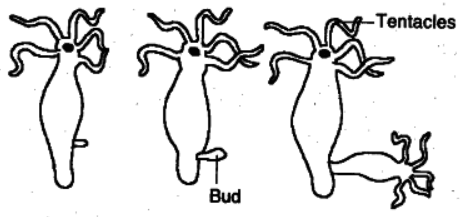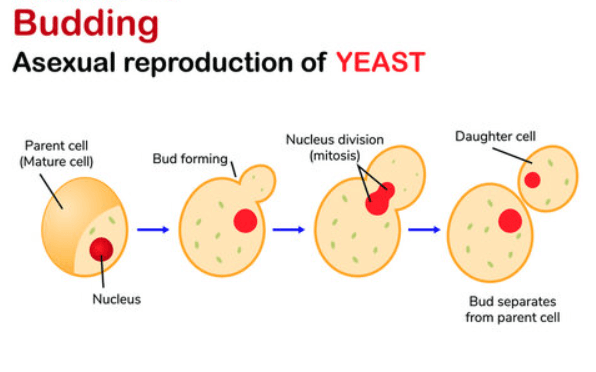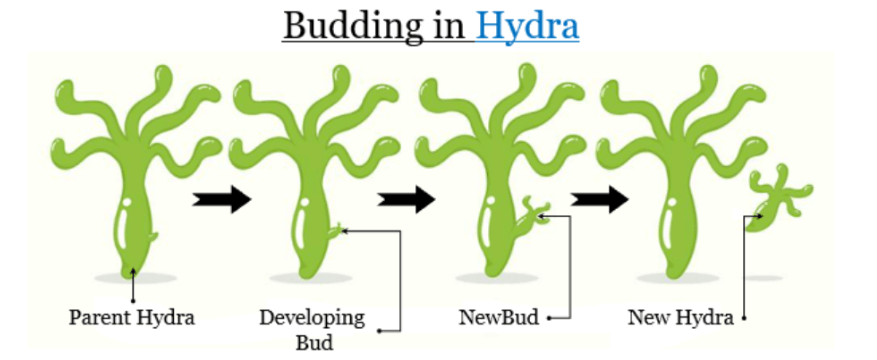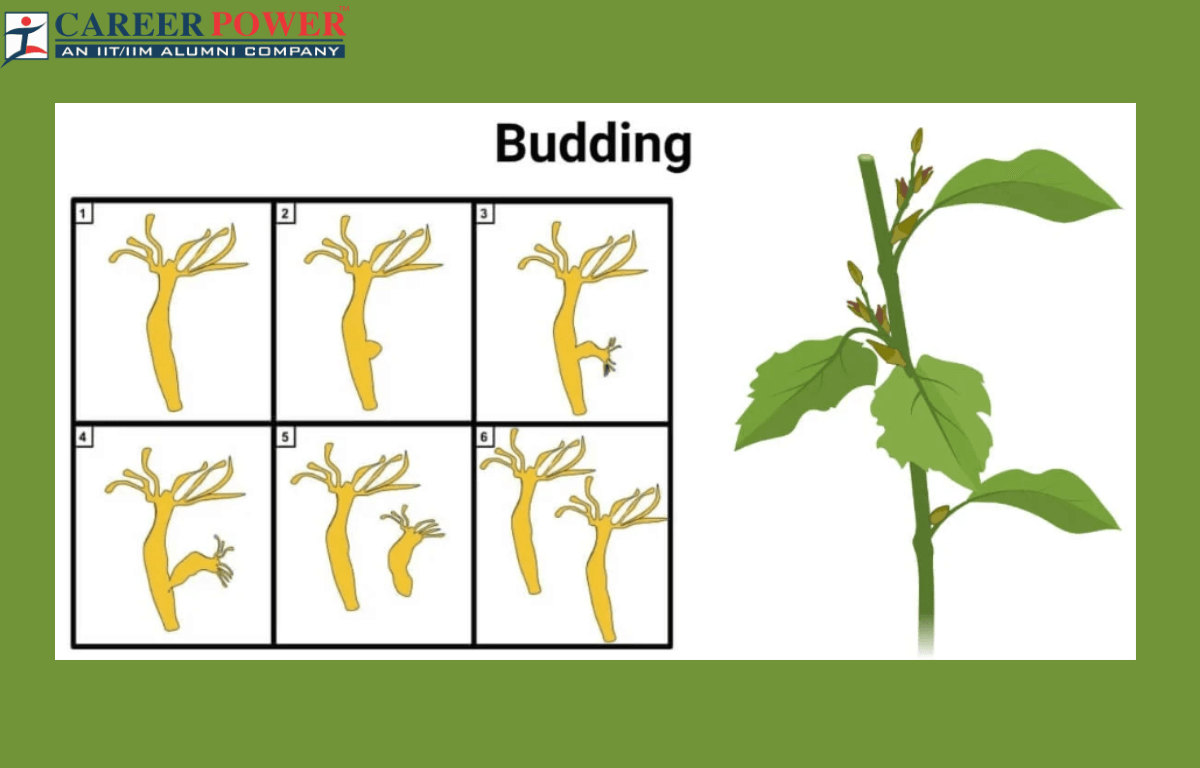Asexual reproduction is a type of reproduction that does not involve the fusion of gametes (Sex Cells). Instead, a single organism can produce offspring genetically identical to itself. Budding is a form of asexual reproduction where a new organism develops from an outgrowth or bud on the parent organism. This bud grows into a complete organism and eventually detaches to live independently. Budding is common in organisms like Hydra, Yeast, and some plants.
What is Budding?
Budding is a form of Asexual Reproduction in which a new organism develops from an outgrowth or bud on the body of an existing organism. The bud grows into a tiny replica of an adult organism and eventually detaches to live independently. This process is common in many simple organisms like bacteria, hydra (a type of freshwater organism), yeast(a type of fungus), and certain types of plants. Budding allows these organisms to rapidly reproduce without the complexities involved in sexual reproduction and colonize new areas.
Budding Diagram
In the context of Biology, a diagrammatic representation of budding typically shows a parent organism with a smaller outgrowth, or “bud”, emerging from its body. The bud continues to grow and develop while attached to the parent organism until it eventually detaches to become an independent organism. This process is common in organisms such as yeast, hydra, and some plants. Overall the diagram of budding shows the stages of growth and detachment.

Process of Budding
Budding is a way some organisms reproduce without a mate. A new organism grows from a small bud on the parent’s body. This method is common in yeast, corals, and certain plants. Budding allows these organisms to create new individuals quickly, which can increase their population in stable environments. It helps them thrive by producing more offspring without needing to find partners, making reproduction faster and easier. Here’s a basic process of budding:
| Steps Involved in the Process of Budding | |
| Steps | Description |
| Outgrowth | The parent develops a small bump or bud. |
| Cell Division | Cells in the bud divide and grow. |
| Organism Formation | Bud develops into a new, independent organism. |
| Separation | A new organism detaches from the parent, becoming fully functional. |
Step 1: Formation of Bud
A small bump, called a bud, forms on the parent organism. This bud consists of undifferential cells.
Step 2: Cell Division
The cells in the bud undergo rapid division and differentiation, leading to the development of various tissues and organs.
Step 3: Organism Growth
The bud grows and develops into a new organism while still attached to the parent.
Step 4: Separation
Eventually, the bud becomes large enough and functionally independent to survive on its own. It detaches from the parent organism and continues to grow independently.
Step 5: Mutation
The newly formed organism matures into an adult over time, repeating the budding process when it reaches reproductive maturity.
Examples of Budding
Budding is a form of asexual reproduction found in various organisms. Here we have discussed a few examples that demonstrate the diversity of organisms that utilize budding as a method of reproduction.
- Yeast: Yeast cells reproduce through budding. A small bud forms on the parent yeast cell, which eventually grows and detaches, becoming a new, independent yeast organism.
- Hydra: Hydra, a simple aquatic organism, reproduces through budding. A bud grows on the body of the parent hydra, and when mature, detaches to form a new individual.
- Coral: Coral polyps reproduce both sexually and asexually. Budding is a common method of asexual reproduction in corals, where new polyps grow as buds on the parent polyp and develop into independent organisms.
- Jellyfish: Some species of jellyfish reproduce through budding. A small bud grows on the body of the adult jellyfish and eventually breaks off to become a genetically identical individual.
- Plants: Some plants, like the spider plant (Chlorophytum comosum), reproduce through budding. They produce offsets, which are small plantlets that grow on the parent plant and can be separated to grow independently.
Budding in Yeast
Budding in yeast is a form of asexual reproduction where a small new cell, called a bud, forms on the surface of the parent cell. The bud grows in size and eventually detaches, becoming a new independent yeast cell. This process allows yeast cells to rapidly reproduce under favorable conditions. Budding is a characteristic feature of many yeast species, including the commonly studied Saccharomyces cerevisiae, and it plays a significant role in various biological processes and research studies.

Budding in Hydra
In Hydra, budding is the process of asexual reproduction where a small outgrowth called a bud develops. The bud starts as a small protuberance on the body of the parent Hydra due to repeated cell divisions in a specific region. As these cells continue to divide and differentiate, various tissues and organs, such as the tentacles and mouth, develop in the bud. The budding process continues until the bud reaches a sufficient size and then detaches from the parent Hydra, becoming an independent organism capable of feeding and reproducing on its own.

One of the intriguing aspects of budding in Hydra is its ability to occur in any part of the body, allowing multiple buds to develop simultaneously. Additionally, budding is not influenced by seasons or environmental factors, enabling Hydras to reproduce rapidly in favorable conditions. This asexual mode of reproduction is advantageous for Hydras, especially in stable environments, as it allows them to colonize new areas efficiently and ensure the survival of their species.



 50 Vegetables Name for Kids in English a...
50 Vegetables Name for Kids in English a...
 Food Chain: Definition, Types, Examples,...
Food Chain: Definition, Types, Examples,...
 Human Respiratory System: Definition, Di...
Human Respiratory System: Definition, Di...













